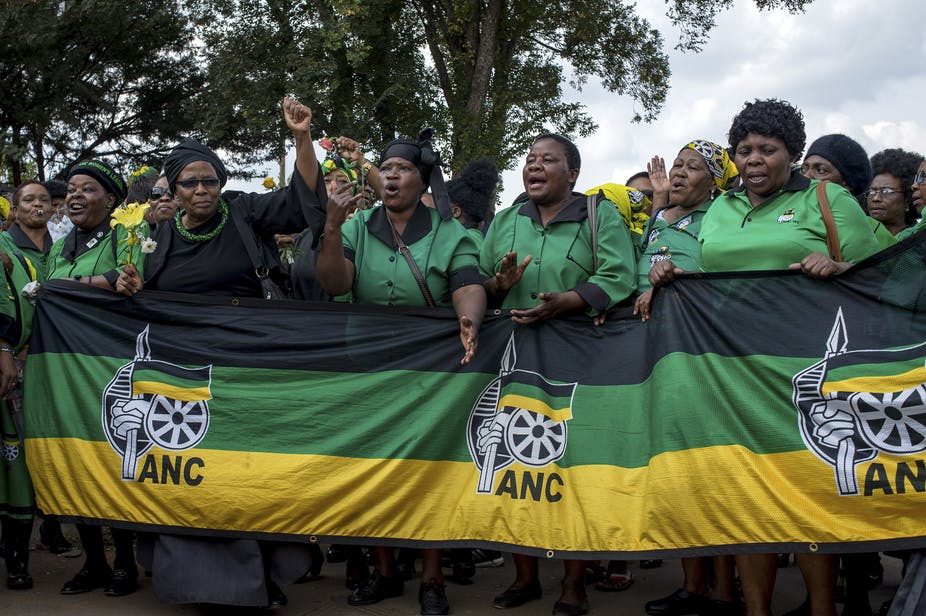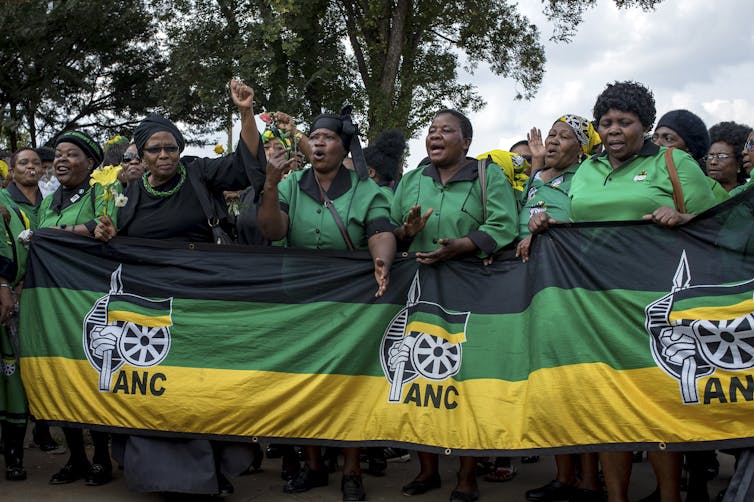
Little is Left of the Feminist Agenda that Swept South Africa 25 Years Ago
Twenty five years ago, on the eve of democratic transition, South African women were optimistic. They were confident of being included in democratic processes that would ensure greater representation for women and more spaces in the state to promote gender equality. Before the first democratic elections in 1994 the Women’s National Coalition – a groundswell […]

Twenty five years ago, on the eve of democratic transition, South African women were optimistic. They were confident of being included in democratic processes that would ensure greater representation for women and more spaces in the state to promote gender equality.

Before the first democratic elections in 1994 the Women’s National Coalition – a groundswell women’s movement that mobilised across race and party lines – consulted over 1 million women at grassroots level all over the country, to produce a Charter of Women’s Rights (a Bill of Rights for women). By the time the election rolled around the African National Congress’s (ANC) Women’s League had negotiated a 30% party quota for women in Parliament. This was no small feat.
More was to follow. The coalition – together with feminist activists and feminist academics – designed the architecture of structures in the state which they called the National Gender Machinery. It consisted of the Office of the Status of Women, the Women’s Empowerment Unit, the Joint Monitoring Committee on the Quality of Life and the Status of Women, a multi-party gender caucus, gender desks in all state departments, and Commission for Gender Equality.
Feminist activists resisted the idea of a Women’s Ministry. They strongly believed that it would lead to women’s issues being ghettoised and not being taken seriously.
The creation of these structures was seen as a deliberate attempt to build institutions that would develop routines and practices to enforce gender equality. South Africa had one of the most comprehensive sets of structures on the continent, and in the world. Australia used to have a comprehensive set of structures, while the US has policy agencies for women.
The initiatives in South Africa put the country at the forefront of creating state institutions that represented the interests of women in the legislature, the executive and the state. To aid women’s presence, the Commission for Gender Equality was set up as a watchdog of government on gender equality.
That early optimism has evaporated. While vestiges of those early initiatives remain in place – such as a 50% quota (that was negotiated in 2007 after President Jacob Zuma came to power) plus a raft of new laws to protect women – it would be fair to say that the quota combined with the state structures did not lead to substantive representation for women. That’s to say that women’s presence in government has not lead to women’s issues being prioritised on the political agenda.
The good years
During the first parliament feminists made legislation that would change the face of gender inequality in South Africa for the better and create substantive representation. Laws that were passed included:
- the Domestic Violence Act (Act 116 of 1998), with the aim of curbing domestic violence and giving women access to interdicts against abusive partners.
- the Maintenance Act (Act 99 of 1998), on which women could draw to force delinquent men to pay maintenance for their children.
- the Recognition of Customary Marriages Act (Act 120 of 1998) that recognises marriages concluded under customary law.
- the Choice of Termination of Pregnancy Act (Act 92 of 1996) that legalised abortion.
Feminist efforts became diluted after Thabo Mbeki took over as president. Feminists took aim particularly at his AIDS denialism and lack of action on the arms deal. This was because more women contracted the HIV virus than men while money spent on arms could have been spent on alleviating poverty.
Evidence of these tensions broke through when Pregs Govender, a committed feminist and the chair of the Joint Monitoring Committee – the key structure monitoring other departments for their contribution to gender equality – resigned after falling out with Mbeki.
Feminists began to leave the state and career politicians took over to fill the quota. As a result feminist consciousness slowly disappeared from parliament. In its place a women’s voice emerged under the ANC Women’s League. It saw its job as mobilising women for nationalist projects and positioning women as the mothers of the nation. Women were reminded of their duty to care for men and children.
Over the last two decades the league became the ventriloquist for men and their factions in the ANC. An example was the “hands off our president Zuma” campaign.
Opposition to this conservative political agenda became contested by women’s organisations in civil society, not women in government.
Using the electoral system for women’s gains
To a large extent women’s representation in parliament is determined by the electoral system. The first-past-the-post (majoritarian) system where women have to compete directly against men in constituencies does not benefit women to the same extent as the proportional (PR) closed list system. If the closed list is a zebra list (alternating the names of women and men) it’s an even better way to get women into legislatures.
The quota system is called a “fast track” for women that has led to significant increases for women globally. South Africa has a PR system with a closed list. In a PR system parties get the number of seats in relation to the proportion of the vote they got.
Quotas were very successful in getting women included in Rwanda. Women make up 64% of the legislature, the highest in the world, as part of a post-conflict settlement.
The ANC is the only party in South Africa with a voluntary party quota. But it didn’t adhere to a zebra list in the 2019 election. It only had one woman in the top six positions in the party. Parliamentary representation is now at 44% women.
The main opposition party makes the liberal argument that women should get into positions on “merit”. The problem with this approach is that merit is measured by male standards, and men’s merit is rarely under scrutiny. The Democratic Party had only five women in the top 20 names on their 2019 list.
The impact of corruption
President Jacob Zuma’s term of office initiated the dismantling of the National Gender Machinery. Some of its structures were already dysfunctional due to a lack of resources, infighting and overlapping mandates. And ignoring any resistance, Zuma’s government institutionalised a Ministry for Women, Youth and People with Disabilities. It has yet to deliver for women on pressing issues such as high levels of gender based violence.
Corruption – and the hollowing out of the state – has also played a part in dismantling what had been built in the early years by weakening institutions. To be effective feminist institutionalism depends on a constitutional state operating according to formal rules.
In addition, patronage networks exclude women from the informal spaces of the shadow state where most important decisions are taken.
After 25 years many of the gains for women have been rolled back.![]()
Amanda Gouws, Professor of Political Science and SARChi Chair in Gender Politics, Stellenbosch University
This article is republished from The Conversation under a Creative Commons license. Read the original article.